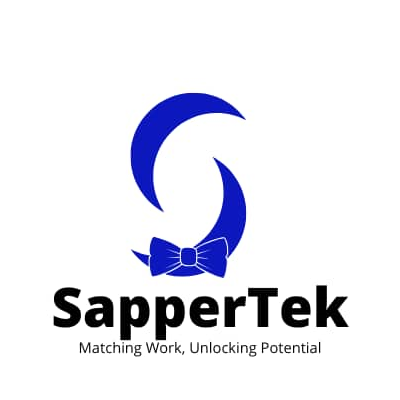Business Plan: Homemade Pasta & Sauces
1. Executive SummaryHomemade Pasta & Sauces is a specialty food business that produces fresh and dried pasta along with unique, high-quality sauces. Our focus is on delivering artisanal, preservative-free products made from organic and locally sourced ingredients. We aim to cater to home cooks, busy professionals, and food enthusiasts who appreciate gourmet meals with minimal preparation.
2. Business DescriptionHomemade Pasta & Sauces will operate as a direct-to-consumer business with online ordering, farmers' market sales, and select partnerships with specialty grocery stores and restaurants. The brand will emphasize freshness, authenticity, and quality, with a range of pasta styles and signature sauces to meet diverse dietary preferences.
3. Market Analysis-
Industry Overview: The demand for fresh, organic, and gourmet food products is increasing, particularly among health-conscious consumers.
Target Market: Our primary customers include health-conscious families, gourmet food lovers, busy professionals, and restaurants seeking high-quality ingredients.
Competitive Analysis: Competitors include grocery store brands, other artisanal pasta makers, and meal kit services. Our unique selling proposition (USP) is fresh, preservative-free, locally sourced ingredients with custom flavor options.
4. Products & Services-
Fresh Pasta: Tagliatelle, fettuccine, pappardelle, ravioli, and gluten-free options.
Dried Pasta: Long-lasting varieties for convenience.
Sauces: Classic marinara, Alfredo, pesto, vodka sauce, truffle mushroom sauce, and seasonal specials.
Meal Kits: Bundled pasta and sauce options with simple preparation instructions.
Cooking Classes & Subscription Boxes: Engaging customers through education and ongoing product deliveries.
5. Business Model & Revenue Streams-
Direct Sales: Farmers' markets, pop-up events, and direct-to-consumer online sales.
Retail Partnerships: Local gourmet shops and specialty grocers.
Restaurant Supply: Supplying fresh pasta and sauces to high-end restaurants.
Subscription Model: Monthly pasta and sauce boxes for recurring revenue.
6. Operations Plan-
Production: Initially, production will take place in a certified commercial kitchen.
Sourcing: Ingredients will be sourced from local farms and organic suppliers.
Distribution: Local delivery, online shipping, and pickup options.
Packaging: Eco-friendly, biodegradable containers to align with sustainability values.
7. Marketing & Sales Strategy-
Branding: Strong visual identity with a focus on authenticity and tradition.
Social Media Marketing: Sappertask, Instagram, Facebook, and TikTok to showcase recipes and behind-the-scenes content.
On Sappertask you have complete control of your payments directly to you bank accounts and any other payment system.
Website & E-Commerce: A user-friendly website with seamless online ordering.
Local Collaborations: Partnering with chefs, food influencers, and bloggers for brand exposure.
Promotions & Discounts: Launch discounts, referral programs, and loyalty rewards.
8. Financial Plan-
Startup Costs: Commercial kitchen rental, ingredient sourcing, packaging, branding, and marketing.
Revenue Projections: Estimated sales growth based on market demand and strategic partnerships.
Funding Requirements: Potential funding sources include personal investment, small business loans, and crowdfunding.
Break-even Analysis: Targeting profitability within the first two years through optimized cost management and effective marketing.
9. Risks & Mitigation Strategies-
Supply Chain Issues: Establish multiple supplier relationships to avoid disruptions.
Market Competition: Differentiate through quality, storytelling, and unique product offerings.
Regulatory Compliance: Ensure adherence to food safety regulations and obtain necessary licenses.
10. Conclusion-
Homemade Pasta & Sauces presents a promising business opportunity with strong demand for high-quality, artisanal food products. Through strategic marketing, exceptional product quality, and an engaging brand presence, we aim to establish ourselves as a go-to provider of fresh pasta and gourmet sauces. With a focus on sustainability, local sourcing, and customer experience, this venture is positioned for long-term success.
1. Executive SummaryHomemade Pasta & Sauces is a specialty food business that produces fresh and dried pasta along with unique, high-quality sauces. Our focus is on delivering artisanal, preservative-free products made from organic and locally sourced ingredients. We aim to cater to home cooks, busy professionals, and food enthusiasts who appreciate gourmet meals with minimal preparation.
2. Business DescriptionHomemade Pasta & Sauces will operate as a direct-to-consumer business with online ordering, farmers' market sales, and select partnerships with specialty grocery stores and restaurants. The brand will emphasize freshness, authenticity, and quality, with a range of pasta styles and signature sauces to meet diverse dietary preferences.
3. Market Analysis-
Industry Overview: The demand for fresh, organic, and gourmet food products is increasing, particularly among health-conscious consumers.
Target Market: Our primary customers include health-conscious families, gourmet food lovers, busy professionals, and restaurants seeking high-quality ingredients.
Competitive Analysis: Competitors include grocery store brands, other artisanal pasta makers, and meal kit services. Our unique selling proposition (USP) is fresh, preservative-free, locally sourced ingredients with custom flavor options.
4. Products & Services-
Fresh Pasta: Tagliatelle, fettuccine, pappardelle, ravioli, and gluten-free options.
Dried Pasta: Long-lasting varieties for convenience.
Sauces: Classic marinara, Alfredo, pesto, vodka sauce, truffle mushroom sauce, and seasonal specials.
Meal Kits: Bundled pasta and sauce options with simple preparation instructions.
Cooking Classes & Subscription Boxes: Engaging customers through education and ongoing product deliveries.
5. Business Model & Revenue Streams-
Direct Sales: Farmers' markets, pop-up events, and direct-to-consumer online sales.
Retail Partnerships: Local gourmet shops and specialty grocers.
Restaurant Supply: Supplying fresh pasta and sauces to high-end restaurants.
Subscription Model: Monthly pasta and sauce boxes for recurring revenue.
6. Operations Plan-
Production: Initially, production will take place in a certified commercial kitchen.
Sourcing: Ingredients will be sourced from local farms and organic suppliers.
Distribution: Local delivery, online shipping, and pickup options.
Packaging: Eco-friendly, biodegradable containers to align with sustainability values.
7. Marketing & Sales Strategy-
Branding: Strong visual identity with a focus on authenticity and tradition.
Social Media Marketing: Sappertask, Instagram, Facebook, and TikTok to showcase recipes and behind-the-scenes content.
On Sappertask you have complete control of your payments directly to you bank accounts and any other payment system.
Website & E-Commerce: A user-friendly website with seamless online ordering.
Local Collaborations: Partnering with chefs, food influencers, and bloggers for brand exposure.
Promotions & Discounts: Launch discounts, referral programs, and loyalty rewards.
8. Financial Plan-
Startup Costs: Commercial kitchen rental, ingredient sourcing, packaging, branding, and marketing.
Revenue Projections: Estimated sales growth based on market demand and strategic partnerships.
Funding Requirements: Potential funding sources include personal investment, small business loans, and crowdfunding.
Break-even Analysis: Targeting profitability within the first two years through optimized cost management and effective marketing.
9. Risks & Mitigation Strategies-
Supply Chain Issues: Establish multiple supplier relationships to avoid disruptions.
Market Competition: Differentiate through quality, storytelling, and unique product offerings.
Regulatory Compliance: Ensure adherence to food safety regulations and obtain necessary licenses.
10. Conclusion-
Homemade Pasta & Sauces presents a promising business opportunity with strong demand for high-quality, artisanal food products. Through strategic marketing, exceptional product quality, and an engaging brand presence, we aim to establish ourselves as a go-to provider of fresh pasta and gourmet sauces. With a focus on sustainability, local sourcing, and customer experience, this venture is positioned for long-term success.
Business Plan: Homemade Pasta & Sauces
1. Executive SummaryHomemade Pasta & Sauces is a specialty food business that produces fresh and dried pasta along with unique, high-quality sauces. Our focus is on delivering artisanal, preservative-free products made from organic and locally sourced ingredients. We aim to cater to home cooks, busy professionals, and food enthusiasts who appreciate gourmet meals with minimal preparation.
2. Business DescriptionHomemade Pasta & Sauces will operate as a direct-to-consumer business with online ordering, farmers' market sales, and select partnerships with specialty grocery stores and restaurants. The brand will emphasize freshness, authenticity, and quality, with a range of pasta styles and signature sauces to meet diverse dietary preferences.
3. Market Analysis-
Industry Overview: The demand for fresh, organic, and gourmet food products is increasing, particularly among health-conscious consumers.
Target Market: Our primary customers include health-conscious families, gourmet food lovers, busy professionals, and restaurants seeking high-quality ingredients.
Competitive Analysis: Competitors include grocery store brands, other artisanal pasta makers, and meal kit services. Our unique selling proposition (USP) is fresh, preservative-free, locally sourced ingredients with custom flavor options.
4. Products & Services-
Fresh Pasta: Tagliatelle, fettuccine, pappardelle, ravioli, and gluten-free options.
Dried Pasta: Long-lasting varieties for convenience.
Sauces: Classic marinara, Alfredo, pesto, vodka sauce, truffle mushroom sauce, and seasonal specials.
Meal Kits: Bundled pasta and sauce options with simple preparation instructions.
Cooking Classes & Subscription Boxes: Engaging customers through education and ongoing product deliveries.
5. Business Model & Revenue Streams-
Direct Sales: Farmers' markets, pop-up events, and direct-to-consumer online sales.
Retail Partnerships: Local gourmet shops and specialty grocers.
Restaurant Supply: Supplying fresh pasta and sauces to high-end restaurants.
Subscription Model: Monthly pasta and sauce boxes for recurring revenue.
6. Operations Plan-
Production: Initially, production will take place in a certified commercial kitchen.
Sourcing: Ingredients will be sourced from local farms and organic suppliers.
Distribution: Local delivery, online shipping, and pickup options.
Packaging: Eco-friendly, biodegradable containers to align with sustainability values.
7. Marketing & Sales Strategy-
Branding: Strong visual identity with a focus on authenticity and tradition.
Social Media Marketing: Sappertask, Instagram, Facebook, and TikTok to showcase recipes and behind-the-scenes content.
On Sappertask you have complete control of your payments directly to you bank accounts and any other payment system.
Website & E-Commerce: A user-friendly website with seamless online ordering.
Local Collaborations: Partnering with chefs, food influencers, and bloggers for brand exposure.
Promotions & Discounts: Launch discounts, referral programs, and loyalty rewards.
8. Financial Plan-
Startup Costs: Commercial kitchen rental, ingredient sourcing, packaging, branding, and marketing.
Revenue Projections: Estimated sales growth based on market demand and strategic partnerships.
Funding Requirements: Potential funding sources include personal investment, small business loans, and crowdfunding.
Break-even Analysis: Targeting profitability within the first two years through optimized cost management and effective marketing.
9. Risks & Mitigation Strategies-
Supply Chain Issues: Establish multiple supplier relationships to avoid disruptions.
Market Competition: Differentiate through quality, storytelling, and unique product offerings.
Regulatory Compliance: Ensure adherence to food safety regulations and obtain necessary licenses.
10. Conclusion-
Homemade Pasta & Sauces presents a promising business opportunity with strong demand for high-quality, artisanal food products. Through strategic marketing, exceptional product quality, and an engaging brand presence, we aim to establish ourselves as a go-to provider of fresh pasta and gourmet sauces. With a focus on sustainability, local sourcing, and customer experience, this venture is positioned for long-term success.
0 Comments
0 Shares
783 Views
0 Reviews







